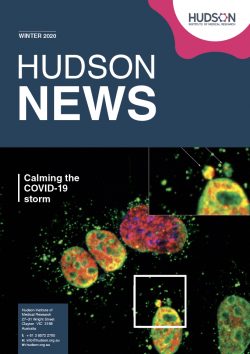Why is the most common form of childhood brain tumour seen more in boys than girls? In discovering the answer, Dr Dan Gough has identified an opportunity for less aggressive treatment.
What did you discover?
We found that a protein called STAT3 plays a key role in the male bias, seen in a type of childhood brain cancer, medulloblastoma. Medulloblastoma affects the cerebellum—the area at the back and bottom of the brain. It develops more commonly in boys than girls, but this is poorly understood.
When we blocked STAT3 in our preclinical study, males—but not females—were completely protected from developing a tumour.
We also discovered that patients with low STAT3 expression had a better survival rate versus those with high STAT3 expression.
This means STAT3 could be a biomarker for predicting patients with a good prognosis, who may benefit from less aggressive treatment. Directly inhibiting STAT3 would also be an effective new targeted therapy for boys with medulloblastoma.
How is medulloblastoma currently treated?
Surgery, radiotherapy and chemotherapy—but this has severe neurological, cognitive and developmental side effects on a young child’s growing brain, with more than 90 per cent of patients needing long-term special education services.
What are the next steps to progress your research?
Our data suggests that clinical trials of STAT3-targeted treatment in children with medulloblastoma are now needed. These trials should also test the effectiveness of STAT3 as a biomarker to enable some patients to receive less aggressive treatment.
Future studies should also investigate the role of STAT3 in different subgroups of medulloblastoma.
Collaborators
Cancer Care Manitoba, German Cancer Research Center
Dr Gough is also striving to develop new therapies for small cell lung cancer and prevent spread of the disease—for which he was awarded a four-year Research Fellowship from the Victorian Cancer Agency.

